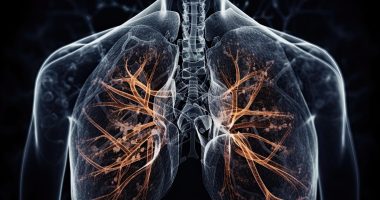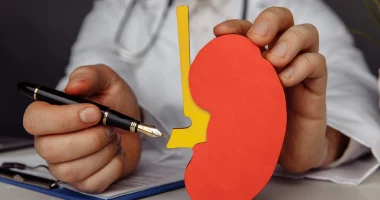Ballismus is an uncommon movement disorder distinguished by involuntary, forceful, and rapid flinging motions of the limbs. These movements are typically more pronounced in the limbs and are often described as uncontrollable and violent. Ballismus can affect one half of the body (hemiballismus) or total body (biballismus), though the former is more common.
The primary cause of ballismus is damage to the subthalamic nucleus, a small structure located in the brain that plays an important role in regulating motor functions. This damage can result from various factors, including stroke, infections, tumors, traumatic brain injury, or metabolic imbalances. Less commonly, ballismus may be linked with some neurodegenerative diseases.
Symptoms
Ballismus is characterized by several distinctive symptoms, primarily involving involuntary and abnormal limb movements. The hallmark of ballismus is the rapid, sudden, and forceful flinging or throwing movements of the limbs. These movements are frequently described as violent and can be dramatic in nature.
The limbs are the most often affected areas, with movements involving a single limb or multiple limbs on the same side of the body. These movements are involuntary, happening without conscious control, and are unpredictable and irregular, varying in intensity and frequency. Due to the uncontrollable nature of these movements, people with ballismus may find it challenging to perform routine tasks like eating, walking, or dressing.
Symptoms of ballismus can worsen with fatigue, stress, or certain physical activities, leading to increased trouble in handling the movements. The forceful and unpredictable nature of the movements can sometimes result in injuries, either from direct trauma to the affected limb or from falls and other accidents. Based on the primary cause of ballismus, other neurological symptoms like numbness, weakness, or speech troubles may also be present.
The impact and severity of these symptoms can vary widely among individuals. Effective management often requires a comprehensive approach tailored to each person’s specific condition.
Causes
Ballismus is primarily caused by damage to the subthalamic nucleus, a small but important structure in the brain that plays a significant role in controlling motor functions. The most frequent cause of this damage is a stroke, particularly those affecting the blood supply to the subthalamic nucleus. When this area is deprived of oxygen and blood, it can result in dysfunction that causes the uncontrollable movements characteristic of ballismus.
Apart from strokes, other factors can contribute to the development of ballismus. Traumatic brain injuries, where physical trauma damages the subthalamic nucleus, are one such cause. Infections that affect the brain, like encephalitis, can also lead to inflammation and damage to this region. Similarly, brain tumors that develop in or around the subthalamic nucleus can exert pressure on it, disrupting its normal function and causing ballismus.
Metabolic imbalances, particularly those that affect brain chemistry, are another potential cause. For instance, conditions like hyperglycemia have been connected to the development of ballismus, especially in individuals with diabetes. Furthermore, certain neurodegenerative diseases, which progressively damage brain tissue over time, can also affect the subthalamic nucleus and lead to symptoms of ballismus.
Diagnosis
The diagnosis of ballismus involves a thorough clinical assessment, including a detailed medical history and physical test to assess the characteristic involuntary movements. Neurological assessment is crucial to identify the existence and extent of the movement disorder. Neuroimaging studies, like magnetic resonance imaging or computed tomography scans, are typically used to find any abnormalities or damage in the subthalamic nucleus or other parts of the brain that might be responsible for the symptoms. In some cases, additional laboratory tests may be conducted to eliminate metabolic imbalances or infections as potential causes. Accurate diagnosis is essential for determining the appropriate treatment plan and addressing the underlying cause of the condition.
Treatment
Treating ballismus focuses on managing the symptoms and addressing the main cause of the condition. The approach to treatment can vary depending on the seriousness of the symptoms and the specific cause of the subthalamic nucleus damage.
Medications
Medications are often the first line of treatment for ballismus. Antipsychotic drugs, like risperidone and haloperidol, can be effective in reducing the severity of involuntary movements by modulating neurotransmitter activity in the brain. Other medications, like anticonvulsants and muscle relaxants, may also be used to help regulate symptoms. In cases where ballismus is caused by metabolic imbalances, correcting the underlying metabolic issue, like managing blood sugar levels in diabetic patients, can significantly enhance symptoms.
Surgical Interventions
Surgical interventions may be considered for many cases of ballismus that do not react to medication. One such intervention is deep brain stimulation, a procedure that involves implanting electrodes in the brain to send electrical impulses to the subthalamic nucleus, helping to control abnormal movements. Another surgical option could be lesioning procedures, where particular areas of the brain are deliberately damaged to decrease symptoms, though this is less commonly used due to its irreversible nature.
Physical Therapy
In addition to surgical and medical treatments, physical therapy can play an important role in managing ballismus. Physical therapists can help patients improve their muscle control and coordination, decreasing the chance of injury from sudden movements. Occupational therapy may also be beneficial, assisting patients in adapting their daily activities to accommodate their symptoms and maintain as much independence as possible.
Changes in Lifestyle
Lifestyle modifications and supportive care are essential components of a comprehensive treatment plan. Individuals may benefit from stress management techniques, as stress can exacerbate symptoms. Ensuring a safe environment to prevent injuries from falls or sudden movements is also important. In some cases, counseling or support groups may help patients and their families cope with the emotional and psychological impact of living with ballismus.
Overall, the treatment of ballismus needs a multifaceted approach tailored to the individual patient’s needs. By combining medications, surgical options, physical therapy, and supportive care, it is possible to manage the symptoms of ballismus effectively and improve the quality of life for those affected by this challenging condition.
Prevention
Preventing ballismus primarily involves addressing and managing the underlying conditions that can cause damage to the subthalamic nucleus. Since stroke is a common cause, maintaining good cardiovascular health is important. This includes controlling hypertension, managing diabetes, maintaining healthy cholesterol levels, and ceasing smoking.
Adopting a healthy lifestyle with a nutritious diet, regular physical activity, and avoiding excessive alcohol consumption can decrease the chance of stroke and other cardiovascular issues. For those at risk of metabolic imbalances, like individuals with diabetes, strict management of blood sugar levels is essential.
Additionally, preventing head injuries by using appropriate safety measures, like wearing helmets and seat belts, can decrease the chance of traumatic brain injury. Regular medical check-ups and prompt treatment of infections can also help prevent complications that might lead to ballismus. While it may not always be possible to prevent ballismus entirely, taking these steps can significantly lower the chance of developing this movement disorder.
Summary
Ballismus is a movement disorder characterized by sudden, forceful, involuntary limb movements, often affecting one side of the body. It is primarily caused by damage to the subthalamic nucleus due to stroke, trauma, infections, tumors, or metabolic imbalances. Symptoms can vary but typically include violent flinging motions, making daily activities challenging. Treatment involves medications, surgical interventions like deep brain stimulation, physical therapy, and supportive care. Diagnosis is based on clinical evaluation and neuroimaging to identify brain abnormalities. Prevention focuses on managing risk factors such as cardiovascular health, and blood sugar levels, and preventing head injuries.








